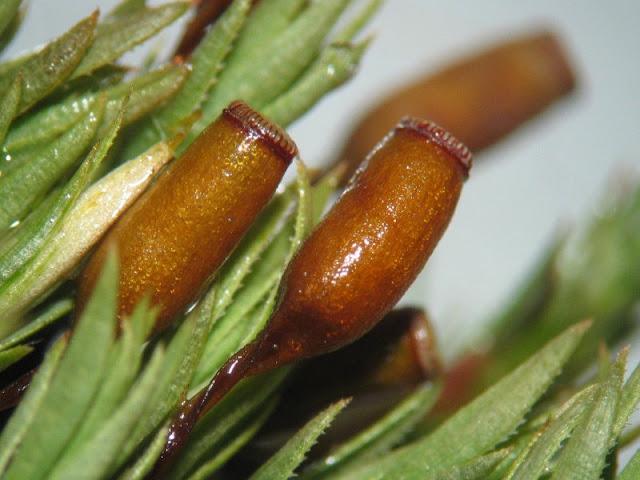
Pogonatum_urnigerum_kapseln.jpeg from: https://allinonelkbiologysinhala.blogspot.com/2020/11/pogonatum-life-cycle-short-note.html
Exploring the Fascinating World of Pogonatum procerum Moss
Introduction
Mosses are often overlooked, but they play crucial roles in ecosystems around the world. One particularly interesting species is Pogonatum procerum (Lindb.) Schimp., a moss in the Polytrichaceae family. In this blog post, we’ll dive into the details of this fascinating plant.
Background
Pogonatum procerum is a species of moss classified in the Polytrichaceae family, which contains some of the largest and most complex mosses. It belongs to the Bryophyta division and Polytrichopsida class. The name “Pogonatum” comes from Greek, meaning “bearded” and referring to the hairy calyptra that covers the capsule.
Morphology and Identification
P. procerum forms tall turfs of upright shoots that can reach 5-10 cm in height. The leaves are lanceolate with toothed margins and a distinct midrib. Leaf cells are small and densely packed. The seta (stalk) is 2-5 cm long and supports an erect capsule covered by a hairy calyptra. Spores are released from the capsule to reproduce.
Global Distribution and Habitat
This moss has a wide distribution, found in North America, Europe, Asia, and Africa. It typically grows on soil, rocks, logs, and tree bases in forests and wooded areas. P. procerum prefers shaded, moist habitats but can tolerate some dryness.
Ecological Roles and Adaptations
Like other mosses, P. procerum plays important roles in its ecosystem:
- Helps retain moisture and prevent soil erosion
- Provides shelter and habitat for small invertebrates
- Pioneers disturbed sites and aids succession
- Indicator of air and water quality
This moss has adaptations like thick cell walls, conducting tissues, and rhizoids that allow it to thrive in its habitat. The hairy calyptra helps protect the developing sporophyte.
Conclusion
Pogonatum procerum is a prime example of how even tiny, inconspicuous organisms like mosses can be fascinating and ecologically important. Next time you’re in the woods, take a closer look – you might just spot some Pogonatum and gain a new appreciation for these amazing plants! What other overlooked species have caught your interest?